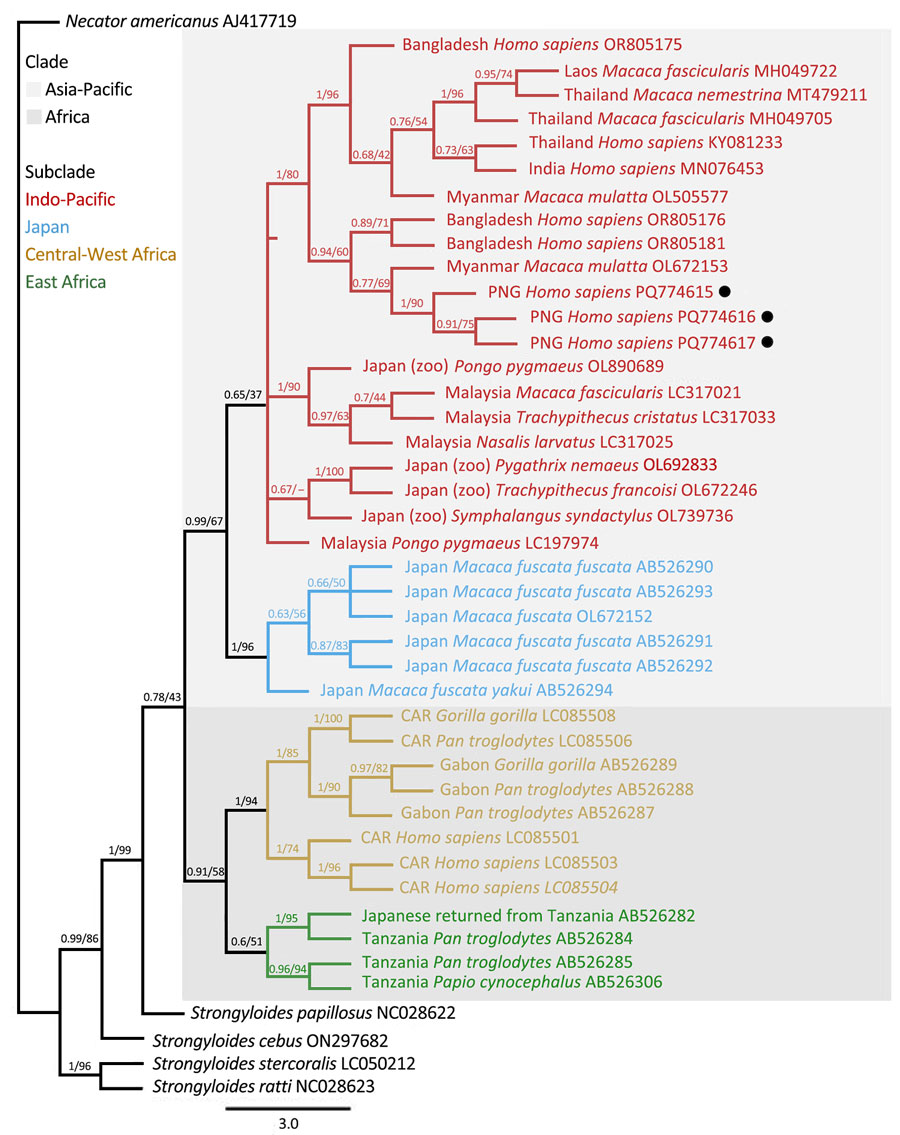Volume 31, Number 9—September 2025
Research
Insights into Infant Strongyloidiasis, Papua New Guinea
Figure 5

Figure 5. Phylogenetic tree of Strongyloides fuelleborni subsp. fuelleborni on the basis of cox1 sequences from study on infant strongyloidiasis in Papua New Guinea. Bayesian posterior probability and maximum-likelihood bootstrap support percentages (1,000 replicates) are indicated at the nodes. Black dots indicate sequences obtained in this study. Previously published sequences are annotated with their country of origin, host species, and GenBank accession numbers. Clades and subclades of S. fuelleborni subsp. fuelleborni are color-coded on the basis of geographic regions. Scale bar indicates number of substitutions per site. –, no statistics are available; CAR, Central African Republic; PNG, Papua New Guinea.
Page created: July 15, 2025
Page updated: August 26, 2025
Page reviewed: August 26, 2025
The conclusions, findings, and opinions expressed by authors contributing to this journal do not necessarily reflect the official position of the U.S. Department of Health and Human Services, the Public Health Service, the Centers for Disease Control and Prevention, or the authors' affiliated institutions. Use of trade names is for identification only and does not imply endorsement by any of the groups named above.